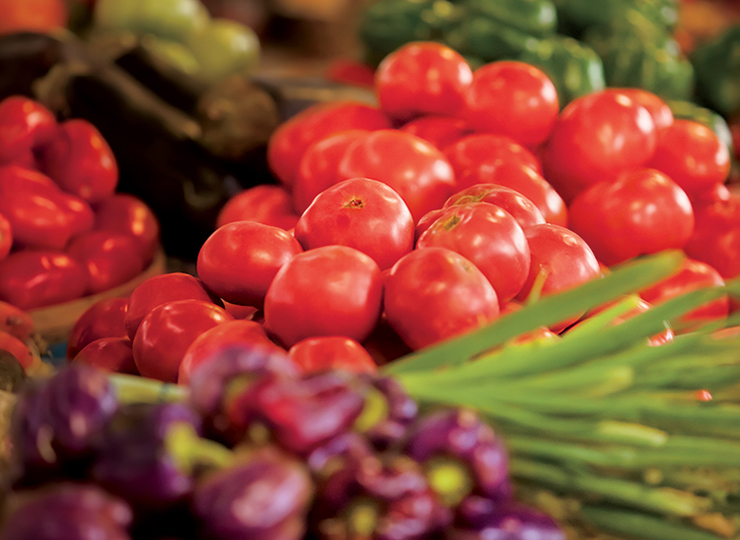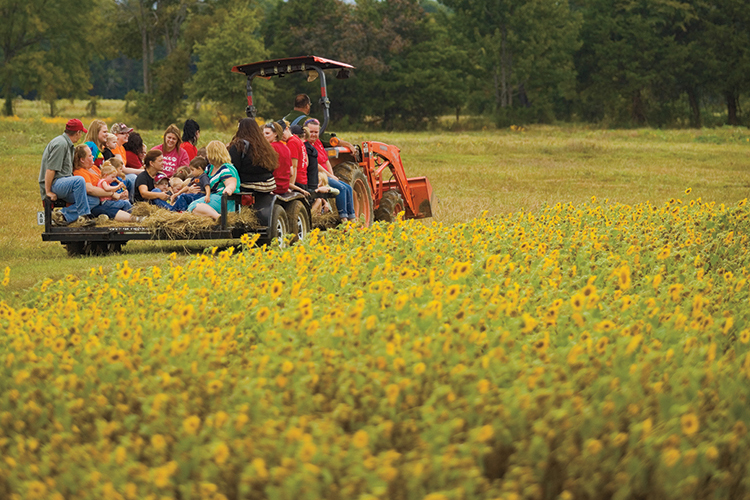Home > Arkansas > Arkansas Ag Education > Reading, Writing and Fresh Produce with Arkansas Farm to School Programs
Reading, Writing and Fresh Produce with Arkansas Farm to School Programs

Though in its infancy, the farm to school program in Arkansas is gaining strong support from farmers, schools and, yes, even the most finicky eaters.
“We’re seeing that once the kids realize it’s not ‘factory’ food but is local, their consumption rate goes up,” says Chuck McCool, a farmer from Rover who sells produce directly to schools in several districts around him. “If it’s grown right here in your own backyard, it will taste better and it’s better for you.”
McCool is one of many Arkansas farmers who participate in a farm to school program facilitated through the Childhood Obesity Prevention Research Program (COPRP) at the Arkansas Children’s Hospital Research Institute. By bringing farms and schools together, the program is proving to be beneficial for both sides.
“Not only is this an opportunity for schools to provide healthy, fresh fruits and vegetables for kids, but it is also an economic market for farmers that really hasn’t been significantly tapped until this time,” says Dr. Judith Weber, co-director for the hospital’s COPRP.

Strong Support From Schools
Arkansas is part of a five-state region that falls under the national Farm to School program established by the USDA. Weber’s team – which includes its program development coordinator, Andrew Carberry – serves as the state’s lead agency for the federal program. As part of the effort to bring fresh produce to schools, the COPRP developed a strategy to address childhood obesity through food systems and agriculture-based programs.
For instance, “we’ve spent the past five years building school gardens,” Weber says. “After the first couple of years, we started helping school gardens ramp up so they could add produce to school meals directly from their school gardens, increasing children’s access to fresh produce.”
Along the way, Carberry has sent surveys to schools and farmers or agriculture organizations, hosted various meetings or workshops to further explain the program, and generally dispensed information and assisted with logistics.
He says about 60 percent of schools he surveyed in the spring of 2014 showed interest in the program. He didn’t have quite the enthusiasm from farmers he had contacted, but expects that should change as the program progresses.
“There are still a lot of people that perceive that farmers are not allowed to sell to schools, that they have to have a special license and there is all this red tape,” Carberry says. “If it’s direct from a farmer and it’s not processed, a license is not required. I try to get that out as much as I can.”

Grassroots Efforts
In addition to the strategies developed by the COPRP, individual farmers, such as McCool, and personnel from various school districts are a driving force in the farm to school push. Evelyn Rayford, food services director for the Forrest City School District, spearheaded a move for the district to adopt the program after learning about it at a conference.
She made connections with local farmers, several of whom she met at various workshops or meetings, and helped to set up systems whereby their produce could be sold in Forrest City schools.
For the most part, she says, students are eating the fruits and vegetables. But success lies in how the food is prepared and the influence of one child over another.
“We’re finding out if they cook it well, the children will eat it,” Rayford says. “We just have (the food) out there in the serving line where they serve themselves. Children that try it convince the other children that it’s good, so it’s more a peer (matter) than anything else.”
McCool, who grows 30 acres of produce, believes the farm to school program can go beyond the school cafeteria.
“We try to encourage schools to bring the students to the farm and get their hands dirty,” he says. “They need to touch the plants, look at the plants, to see how things grow.”



